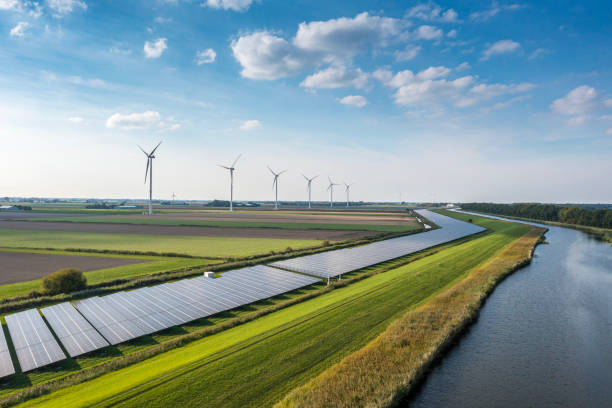A guide to MITECO carbon footprint calculator


What Is the MITECO Carbon Footprint Calculator?
Why Are More Companies Using This Tool?
How the MITECO Calculator Works: What You Need to Know
How Does This Relate to Your Company’s ESG Goals?
How to Prepare Your Team to Measure the Carbon Footprint
Why Dcycle Is the ESG Solution You Were Looking For
Frequently Asked Questions (FAQs)

Even if it doesn’t seem like it, using the MITECO carbon footprint calculator is the first step many companies take to start measuring their emissions.
It’s free, backed by the ministry, and provides a useful reference to get started.
The issue? It falls short.
It helps with estimation, but not with management.
If we aim to comply with regulations, optimize processes, or get comparable data, we’ll need something more advanced.
Still, understanding how this tool works is valuable.
It helps identify the data we need and how to start organizing it.
In this article, we’ll explore what this calculator offers, where its limits are, and how to go from a basic estimate to a strategic measurement.

The MITECO carbon footprint calculator is a public tool created by the Spanish Ministry for Ecological Transition and Demographic Challenge.
It’s designed to help companies estimate their greenhouse gas emissions in a standardized way.
Its main goal is to make it easy to take the first step.
It allows organizations to begin measuring without needing deep technical knowledge, using a basic logic based on consumption data.
It works with predefined forms where you input data such as electricity, fuel, or travel.
From there, the system calculates the total emissions in CO₂ equivalent tons.

Because it’s accessible, official, and recognized.
Many companies that haven’t digitized their ESG processes yet use it as a starting point to understand their basic environmental impact.
And because measuring is no longer optional.
To continue operating in markets that demand CSRD, EINF, or Taxonomy alignment, we need to report clear, verifiable data.
The MITECO calculator provides a first snapshot that can help guide those reports.
But to scale and align with more complex sustainable finance frameworks, companies will need more advanced tools.

Estimates the total emissions of the entire organization, including activities like production, transport, or energy use.
Allows you to calculate the impact of a specific product, from raw material extraction to use or end-of-life.
Although, with a certain degree of simplification.
Electricity, gas, fuel, and other direct or indirect energy sources.
These form the base for calculating Scope 1 and 2 emissions.
Covers employee travel, logistics, and business trips.
A large part of Scope 3, although in a general way.
You can input data on materials used and waste generated, though with limited detail compared to more advanced solutions.
Focus on the GHG Protocol. The calculator is based on this internationally recognized standard, which ensures compatibility with global reporting frameworks.
The system includes conversion factors, simplifying the process.
But they are average values, not tailored to each sector or company.
The main output is the aggregate result in tons of CO₂eq, broken down by emission type based on source.
You can export PDF documents summarizing the results.
They’re helpful for internal reporting or as a base for preparing external reports.
Great for getting started. No need for licenses or fees, and it’s backed by a public institution.
You can’t automate data input or adapt it to various regulatory frameworks flexibly.
If you need to report under multiple standards, it will likely fall short.
In short:
The MITECO calculator is useful for taking the first step.
But if we want to integrate ESG data into our entire strategy, link with CSRD, SBTi, Taxonomy or EINF reports, we need a solution built for the full journey.

Measuring your carbon footprint is not an isolated task.
It’s a core element of any well-structured ESG strategy.
If we want to reduce emissions, comply with regulations, and make data-driven decisions, we must start here.
Companies that are already measuring their impact have a clear advantage.
They know what they’re emitting, where they’re falling short, and how to prioritize their actions.
The rest are still making decisions blindly.
Data is not just for reports.
It’s the foundation for building a realistic roadmap, demonstrating compliance, and getting ahead of new regulatory demands.
Absolutely.
Using basic tools like the MITECO calculator is fine to start, but they don’t scale.
They don’t connect data automatically, don’t generate complete reports, and don’t adapt to various regulatory frameworks.
Doing everything manually leads to wasted time, increased errors, and insufficient insight.
We can’t keep relying on Excel if we want to meet CSRD or back up a serious decarbonization strategy.
Can we relax? Not really.
Regulatory demands are growing, and if we don’t have control over our ESG data, we’ll always be late to everything.

Good measurement starts internally.
Having the best tool won’t help if no one in the company knows what data to collect or why it matters.
We need every team aligned, operations, finance, purchasing, logistics…
They all generate data that directly affects the emissions calculation.
With clear training, simple processes, and a shared vision.
They don’t need to be experts, but they do need to be allies.
If your team understands that this is not just about compliance, but about cost control and risk management, they’ll be far more engaged.
If the data we collect isn’t reliable, no platform will fix it.
We’ll be making decisions based on the wrong numbers.
It helps to assign responsibilities by department, each person knowing what to provide and how.
The clearer it is, the smoother everything runs.
ESG measurement isn’t just sustainability’s job.
It’s a cross-functional responsibility that affects both strategy and operations.
And the sooner we embrace that, the better prepared we’ll be.
Using the MITECO carbon footprint calculator is a smart first step. It gives you a reference, forces you to gather basic data, and introduces you to the emissions mindset. But if you stop there, you're missing the real opportunity: turning that estimate into a decision-making engine.
The calculator asks for manual data: electricity, fuel, transport, etc. But if that information is scattered across spreadsheets, emails or old reports, the quality of your footprint will be weak. And it’ll keep holding you back.
The goal is to build a structured, centralized data source. A single place where every consumption figure is validated, updated, and has a clear owner. That’s what allows you to automate. To connect data with action. To report with confidence.
And if you can replace the calculator’s average values with your own real-world data, say, certified renewable energy or electric fleet usage, you get much more accurate and meaningful results. Precision starts where generic numbers end.
Having your footprint measured is good. But it won’t do much unless you use it to create a plan that reduces emissions.
This doesn’t mean aiming for net zero by 2040 without a clue how to get there. It means identifying real opportunities:
Look at your numbers. Spot your biggest emissions sources. See what can be changed quickly and affordably. Assign owners, set timelines, track progress.
And don’t stop at CO₂. Tie your carbon reduction efforts into your ESG goals. For example, switching to greener transport might also improve worker safety or lower costs. When environmental goals align with your business strategy, the impact multiplies.
Manual inputs are fine for small businesses. But the bigger your company, the harder it is to keep up that way.
You’ll eventually need to connect your internal systems, like energy platforms, purchasing software, logistics tools, with your ESG reporting process.
This is where process automation makes life easier. No more manual data entry, no more chasing departments. Just clean, consistent data flowing where you need it.
And don’t forget your supply chain. If your emissions include those from suppliers or logistics partners, start collecting that data too. Work as a network, not as an island. Because most of your emissions probably happen outside your walls.
Every number in your carbon report might be questioned. That’s why you need traceability. You need to show where each figure came from, how it was calculated, and who validated it.
Being able to back up your data isn’t just helpful, it builds credibility. If you can prove your methods, people trust your numbers. If you can’t, they question everything.
And that trust matters. Especially when you’re pitching to clients, applying for funding, or showing stakeholders that your ESG game is strong.
Emission numbers aren’t just a compliance thing. They’re a way to win business, reduce costs, and stand out.
They give you proof, to regulators, to customers, to your own teams, that you’re making progress. That you know where your risks are. That you’re not greenwashing.
You can use those numbers in RFPs, funding applications, sustainability ratings, investor reports… Your footprint becomes part of your competitive edge.
And when those metrics start driving internal change, smarter logistics, cleaner operations, better supplier selection, you see value not just on paper, but in how the company actually runs.
Businesses change. Operations shift. Markets move. Your emissions strategy needs to evolve too.
Don’t base your plans on a snapshot from two years ago. Keep things current:
When something changes, a new factory, a product launch, a bigger fleet, your carbon system needs to catch up. And if it does, you stay in control.
The MITECO calculator is a great place to start. But it’s just that: a start. The real value shows up when you:
When you treat your carbon data not as a chore, but as a strategic tool, you get way more out of the process. You gain visibility. You cut unnecessary costs. You reduce risk. You plan better. You position your brand ahead of the curve.
In short: you stop just measuring your footprint, and start leading with it.
Successfully measuring and managing your carbon footprint goes far beyond choosing a calculator or entering numbers. It requires creating internal capacity and embedding carbon data into everyday decisions. This means empowering your team, engaging your value chain, and transforming emissions insight into strategic advantage. Let’s explore how.
Most sustainability efforts stall because responsibility isn’t clearly defined.
Assign clear roles. Identify a carbon champion in each department, finance, operations, HR, procurement, logistics. These champions help collect data, validate numbers, and integrate carbon metrics into their team’s workflow.
Conduct targeted training, not generic sessions. Tailor workshops for each team:
The goal is to make carbon measurement meaningful, not burdensome. Equip each team with a simple checklist labeling what data they need, how to collect it, and why it matters.
Regularly review issues logs, track problematic data points, and troubleshoot them as a team. When errors are identified, don’t punish, solve. Encourage open feedback, and celebrate improvements.
Tools alone won’t work if your processes aren’t adapted. That’s why embedding carbon measurement means more than using software, it means redesigning how work gets done.
Integrate data collection tasks into existing workflows. For example:
This shift doesn’t require new meetings, it requires integration. When data capture becomes part of routine reporting, rather than an additional task, compliance becomes seamless.
Use automated notifications and reminders for when key data needs entry. If a team consistently misses deadlines, you can see why and fix the process, not blame them.
The real impact often lies beyond your walls, in your suppliers, logistics partners, even your customers.
Start by mapping your scope 3 hotspots. You don’t need full data from every supplier, just the ones that matter most: high-emission, strategic vendors.
For those suppliers, create simple data forms or templates that feed directly into your system. Offer them support and explain why the information matters, and how it benefits them too.
Reward transparency. If a supplier shows improvement or innovation in emissions, feature them in your communications or procurement strategy. Make data participation a value proposition, not a burden.
Eventually, integrate this data into your supplier qualification process, giving preference to vendors with better carbon performance.
Carbon data isn't just environmental, it's financial. That’s why you should tie emissions KPIs to business metrics.
For example:
When teams see carbon metrics alongside cost, quality, and safety indicators, they stop treating it as an add-on and start treating it as central to performance.
You can even gamify progress, quarterly dashboards, team-based challenges, internal recognition. This creates culture around measurement and improvement.
Carbon measurement provides visibility into inefficient processes or weak links in your operations.
Look at where emissions are highest:
Use that insight to redirect investment. Swap fleets, rethink routes, replace inefficient equipment, switch raw materials. Your carbon measurement then becomes a tool for ROI-driven improvement, not just reporting.
Make carbon data visible, not hidden in reports.
Present every quarter at internal town halls or team meetings: share carbon dashboards, recognise successes, highlight areas behind schedule.
Transparency breeds accountability. When teams see how they compare, motivation increases.
Publish internal “carbon performance scorecards” tied to budgets or KPI reviews. This encourages ownership and continuous improvement.
The carbon landscape is changing fast. Don’t settle into “one-and-done.”
Build a quarterly or biannual carbon review cycle:
Update your KPIs and refresh training accordingly.
Encourage teams to suggest improvements. Small changes, like switching transport routes or optimizing HVAC, can reduce emissions faster than sweeping initiatives.
Over time, this continuous approach turns carbon measurement from a static task into a growth engine.

We gather information from multiple sources and organize it in one place.
That simple.
Energy, emissions, waste, social policies, suppliers, all connected.
No more collecting data manually or calculating separately.
We automate the process, apply recognized methodologies, and keep emission factors up to date.
Get Ready to Report With Confidence to CSRD, Taxonomy, ISOs, and More
With one system, you can meet the needs of every reporting framework.
No last-minute report edits, no starting over.
Save hours of work, avoid errors, and turn measurement into a competitive advantage, not a burden.
We’re a solution, not a consultancy.
Our goal is to help you integrate sustainability into your business, no complications, no fluff.
Because if we don’t measure properly, we won’t be able to play the game.
It’s the total amount of greenhouse gas emissions generated by a company, product, or activity over a specific period.
It’s measured in tons of CO₂ equivalent.
Yes, and in fact, many SMEs use it.
It’s free and easy to use.
It works well as a starting point to understand the basic impact of your operations.
It depends on the report.
It can be used as a reference for internal registers or self-assessments, but if you need to comply with CSRD or detailed reporting standards, it won’t be enough.
You can’t automate or customize it. It also doesn’t connect with other systems or allow for process scaling. It’s great to get started, but not for full ESG management.
We centralize your data, automate calculations, and generate reports ready for any standard.
We’re not consultants, we’re a solution for companies that want to manage their ESG strategy effectively and without complexity.
Carbon footprint calculation analyzes all emissions generated throughout a product’s life cycle, including raw material extraction, production, transportation, usage, and disposal.
The most recognized methodologies are:
Digital tools like Dcycle simplify the process, providing accurate and actionable insights.
Some strategies require initial investment, but long-term benefits outweigh costs.
Investing in carbon reduction is not just an environmental action, it’s a smart business strategy.